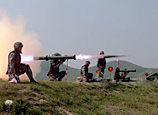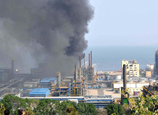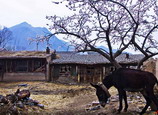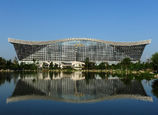
KATHMANDU, June 3 (Xinhua) -- Three plane crashes occurred in Nepal during the last two weeks, raising serious questions about the country's civil aviation security and the safety of passengers, most of whom are foreign tourists.
The main reasons, according to experts and government officials, are increasing "unhealthy competition" among private airlines operating in the mountainous terrain and lack of effective regulatory mechanism.
Due to tough competition, private airlines sometimes force their pilots to fly even during bad weather or under unfavorable conditions.
Some airline operators also have used unscrupulous methods by ordering their pilots to land at secluded airports where other airlines could not land due to safety reasons. In some instances, according to officials who do not want to be named, even planes with technical problems are given clearance for take-off.
Experts pointed out that lack of sufficient resources and facilities, problematic geographical locations, and bad weather are the main causes of plane crashes.
Most of the plane crashes happened in hilly or mountainous areas where weather is often unpredictable and where there are no effective mechanisms to monitor weather conditions.
On June 1, one passenger was injured when a Dornier plane of Sita Air crashed while landing at Simikot Airport of Humla, 700 km northwest of capital city Kathmandu.At the same airport, on May 27, a 9N AJU Cessna Grand Caravan aircraft of Goma Air skidded off the runway while landing.
On May 16, an airplane of Nepal Airlines, a government-owned airline, skidded off and fell into the Kaligandaki River near the Jomson Airport of Mustang District, injuring 21 people on board.
Luckily, there were no casualties in these plane mishaps but it sparked a debate about the security of passengers on board, who are mostly foreign tourists.
An official of the Civil Aviation Authority of Nepal (CAAN) told Xinhua that there is a lack of effective weather forecasting system and other facilities at most airports in the rural areas of Nepal.
"If effective mechanism is installed to forecast and evaluate the weather and the density of the clouds, we can somehow reduce plane crashes in the coming days," Rameshwor Thapa, a senior pilot and civil aviation expert, told Xinhua.
"Repeated crashes should give us a message that pilots should maintain utmost caution and aviation officials should not allow planes to take off without first evaluating the weather and other conditions," he said.
A report prepared by CAAN in 2012 showed that only 11 out of 54 airports in the country have been operating at a profit during the last five years. The government is covering the operating cost of airports losing money and that could be the reason why these airports lack necessary safety facilities.
Besides, some airports in rural areas are located in difficult terrain where the runways are very narrow. Some domestic airports are being run without black-top runways.
Aviation experts are saying that landing a plane at such airports during the monsoon season is risky. "Landing a plane in the rural airports of Nepal is really a challenging task because of the lack of proper infrastructure there," said Hemanta Arjyal, a civil aviation expert who writes a regular column on aviation issues in a local newspaper.
"Most of the domestic airports lack proper facilities and equipment and runways are not paved. Bad weather and the location of airports are the other problems," he said.
Since 1949, when the first aircraft landed in Nepal, there have been about 80 different crashes involving both airplanes and helicopters.
The first major plane mishap in Nepal occurred on March 3, 1955, when a DC-3 belonging to Kalinga Air crashed in Simara, killing two people.
After every crash the government forms an investigation team but the report submitted by those teams have never been publicized. Annex 13 of the International Civil Aviation Organization, to which Nepal is a party, explicitly states that "the sole objective of the investigation shall be to prevent accidents and incidents" and "it is not the purpose of this activity to apportion blame or liability."
But the Nepal government seems unwilling to conduct objective investigation and correct the mistakes that have led to plane crashes.
















 Photo story: Mask girl's hard life
Photo story: Mask girl's hard life


![]()
